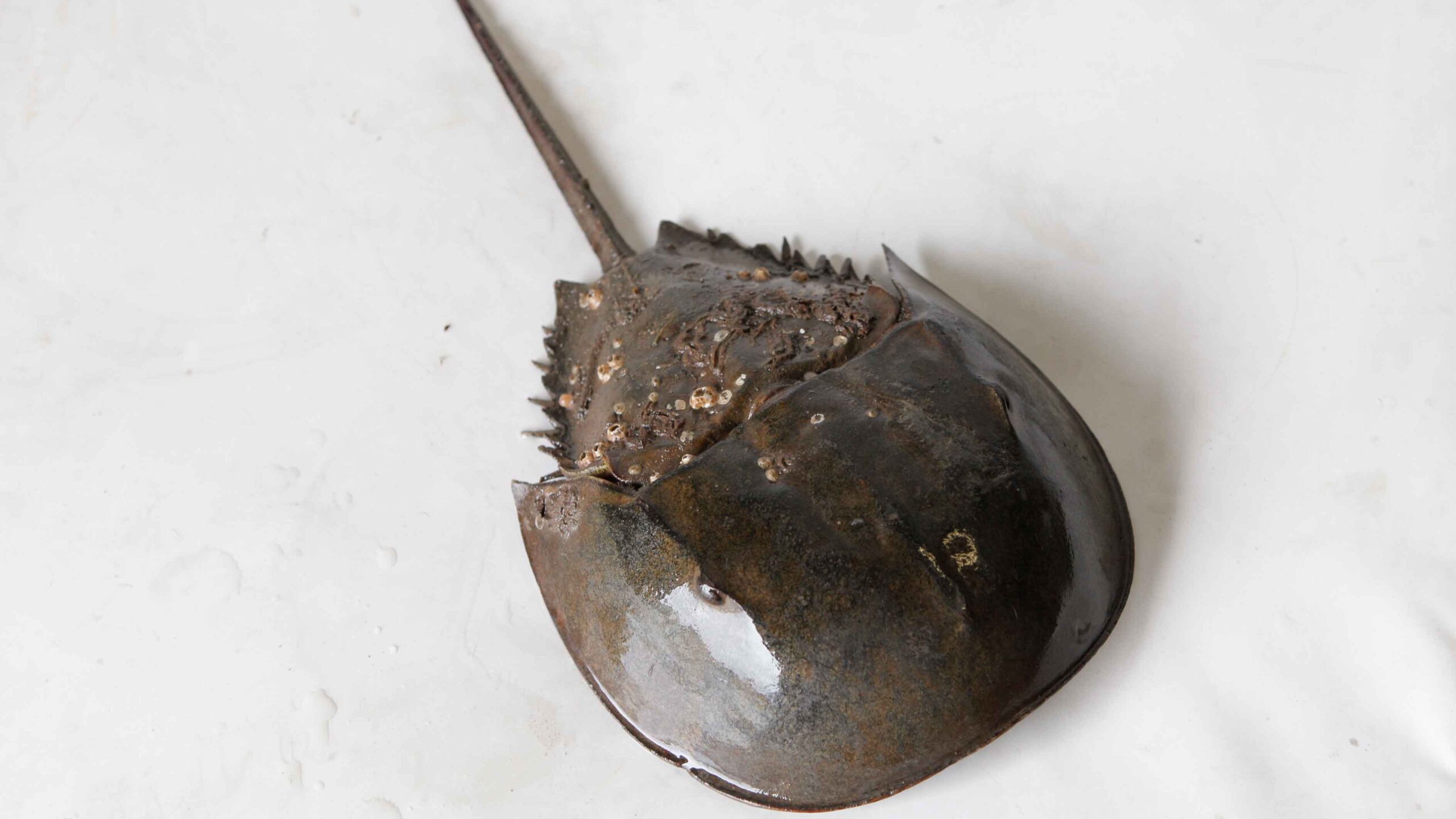 Max Size: Females grow to max size of ~48cm (18-19 inches) head to tail, Males grow to max size of ~38cm (14-15 inches)
Max Size: Females grow to max size of ~48cm (18-19 inches) head to tail, Males grow to max size of ~38cm (14-15 inches)
Habitat: Atlantic Ocean along North American coastline in mud flats, estuaries and other soft sediment habitats
Diet: Small crustaceans, clams, worms and other soft bodied organisms found in sand/mud
Fun Facts:
- Horseshoe crabs are often called ‘Living Fossils’ because their species has its origin almost 450 million years ago. Examination of fossilized horseshoe crabs shows us that their body plan hasn’t changed much in all that time
- Horseshoe crabs are fairly slow-moving animals, making it easy for species like barnacles and blue mussels to grow on their shell
- Horseshoe crabs belong to a group of organisms called Chelicerata, a subphylum of Arthropods that also includes arachnids and sea spiders; this means horseshoe ‘crabs’ are actually more closely related to spiders and scorpions than they are to crabs and other crustaceans
- While the horseshoe crab’s telson (‘tail’) might look dangerous, it’s main use is to help the crab flip itself over in case it winds up stuck on its back! The telson also helps the crab to sense its environment
- Horseshoe crabs seasonally migrate to beaches during summer to reproduce. If you visit the beach at night during their breeding season, you might see hundreds of horseshoe crabs mating on the beach (see photos in our gallery!)
- Because horseshoe crabs rely on soft shorelines like beaches to reproduce, the development of these habitats negatively impacts their population.
More Info:
Horseshoe crabs are regularly collected for use by the medical industry so that a portion of their blood can be harvested. Horseshoe crabs have very strong immune systems that are very good at finding and clotting around potential vectors of infection. Humans use collected horseshoe crab blood to create a substance called LAL (Limulus amebocyte lysate) that is used to test for vectors of infection throughout the medical industry. This collection also negatively affects their population due to mortality rates associated with crabs that are drained for blood.